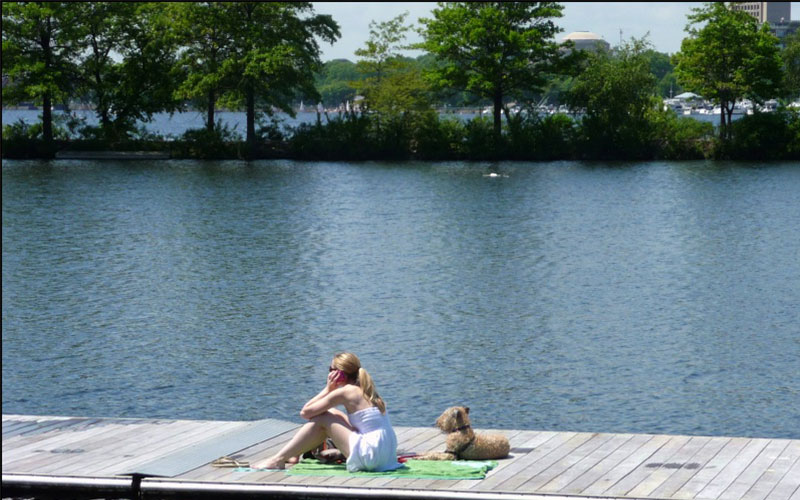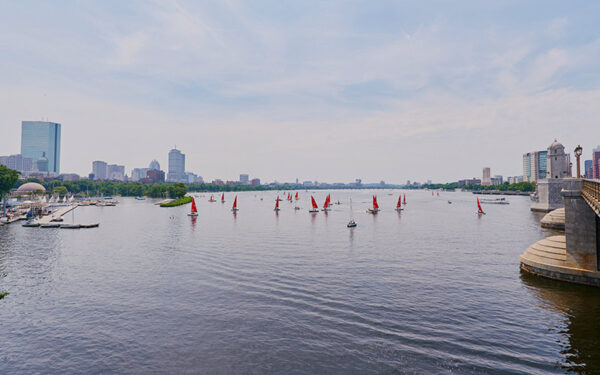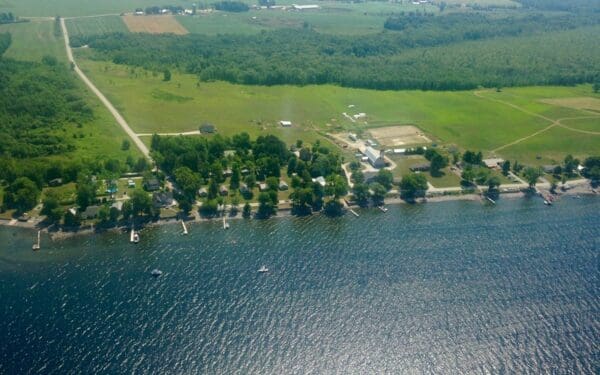
CLF is working to make sure the Charles River is clean and safe for humans and our pets. Photo: Leslee_atFlickr via CC-BY-NC-ND-2.0
A version of this blog was previously published on June 14.
In the last couple of weeks, the news has reported tragic stories of healthy dogs dying shortly after swimming in toxic algae-choked waters. These stories highlight the dangers of the algae pollution problem here in Massachusetts, where dog owners have been warned to keep their pets out of waters across the state. Blue-green algae thrive in warmer water, so the climate crisis is expected to make these outbreaks more frequent. On top of the threat it poses to our pets, toxic algae is also dangerous to our human health.
That’s why CLF is fighting so hard to clean up our waters. This summer, together with the Charles River Watershed Association, we filed a petition pushing the Environmental Protection Agency (EPA) to hold polluters along the Charles River accountable for the dirty discharges that cause these harmful outbreaks. And we’re working across New England to make sure that our waters are clean and safe for humans and our pets.
Toxic Algae Harms Plants, Animals, and You
What makes toxic blue-green algae such a threat? For starters, the layer of algae that forms on the water surface becomes a barrier, preventing sunlight and oxygen from reaching the aquatic plants and animals that need it. Everything below the surface of the Charles is in danger when cyanobacteria spread.
Above the surface, things aren’t much better. Blue-green algae also wreak havoc on human health. Its effects range from minor – headaches, vomiting, and nausea – to major, including pneumonia, incoherent speech, and respiratory paralysis. Emerging research also shows a link between exposure to toxins produced by blue-green algae and neurodegenerative diseases like Alzheimer’s and Parkinson’s.
Since outbreaks usually occur in warm months, they also interrupt our favorite summer activities. Harbors and beaches are forced to close, and recreational activities are put on hold because it’s not safe to be on, in, or near the water. Earlier this summer, the annual Charles River swim was canceled because of high bacteria levels, and the event couldn’t be postponed for warmer months because of algae outbreaks. This isn’t the only year that boat races and public swim events on the Charles have been canceled due to toxic blue-green algae.
What’s more, with climate change making summers getting hotter and rainfall more intense, blue-green algae outbreaks will only get worse if we don’t take action now.
Keeping the Charles Safe
We can put an end to the harm caused by blue-green algae outbreaks by requiring the biggest contributors to the problem to control their stormwater pollution. This pollution happens when rainwater flows across paved surfaces, collecting debris, pesticides, metals, chemicals, oil, and other pollutants along the way. That contaminated water drains into the Charles River.
Stormwater runoff from commercial and industrial properties with lots of paved surfaces, like big box stores, strip malls, private universities, and major apartment complexes, is not currently regulated by EPA. However, these properties contribute a disproportionate amount of polluted runoff to the Charles. Due to a quirk of the Clean Water Act, EPA must act to formally bring these types of polluters into a regulatory program.
Even though EPA has the authority to do this – called Residual Designation Authority (or RDA) – they haven’t. And that’s a problem. That’s why CLF and our partners at Charles River Watershed Association are calling on the federal agency to take the steps necessary under the Clean Water Act to control stormwater pollution from major landowners with large amounts of paved surface and buildings.
This is not without precedent. In 2008, CLF asked EPA to regulate polluters in Maine’s Long Creek watershed, and it complied. Since then, local businesses have partnered to limit their stormwater pollution, and the once-dying Long Creek is slowly recovering.
It’s time for polluters to be held responsible for the harm they’re causing the Charles so we can all enjoy the river for years to come.



